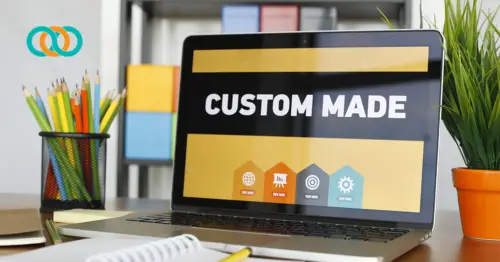Why Accessibility Matters in Designing Training Projects
When it comes to designing training programs, accessibility isn’t just a “nice to have” — it’s essential. Whether you’re partnering with an instructional design consultant or an instructional design contractor, making accessibility a priority ensures that every learner can engage, participate, and succeed.
In today’s workplaces and educational settings, diversity goes far beyond demographics. It includes people with sensory, physical, cognitive, and neurodiverse needs, and every one of them deserves equal access to learning opportunities. Building training that’s accessible doesn’t just check a compliance box. It builds a stronger, more inclusive culture and leads to better outcomes for everyone.
Let’s break down why accessibility is so critical in training projects and how a thoughtful approach can make all the difference.
Key Benefits of Accessibility in Training Design
1. Inclusivity That Empowers Every Learner
At its core, accessibility is about inclusion. Accessible training ensures that all employees, including those with disabilities and neurodiverse individuals, have the tools they need to learn, grow, and contribute meaningfully.
When a training program is accessible, it removes barriers that might otherwise prevent someone from participating fully. This could mean offering screen reader-compatible modules for someone with vision impairment, creating layouts free of unnecessary distractions for learners with ADHD, or providing alternative formats for learners with dyslexia.
Accessible training empowers every employee, fostering a workplace culture where everyone feels valued, supported, and able to succeed.
2. Staying on the Right Side of Compliance
Accessibility isn’t just best practice; it’s often a legal requirement. In the United States, for example, Section 508 of the Rehabilitation Act mandates that federal agencies’ electronic and information technology is accessible to people with disabilities. There are other regulations to comply with, like the Americans with Disabilities Act (ADA) or the Accessibility for Ontarians with Disabilities Act (AODA).
Partnering with an experienced instructional design consultant or instructional design contractor can help ensure your training materials meet these standards. Skilled professionals know how to navigate accessibility guidelines and design content that passes compliance audits, saving your organization from costly legal risks and reinforcing your commitment to corporate responsibility.
3. A Better Learning Experience for Everyone
One of the often-overlooked benefits of designing with accessibility in mind is that it usually improves the learning experience for all users, not just those with disabilities.
Accessibility encourages the use of multiple ways to present and interact with content. For instance:
- Adding audio narration can help auditory learners absorb information more effectively.
- Providing transcripts can support learners who prefer reading to listening.
- Offering uncluttered layouts and adjustable pacing can benefit neurodiverse learners who need more control over how they interact with content.
By accommodating a variety of learning preferences, accessible training leads to higher engagement, better retention, and deeper understanding across the board.
4. Expanding Your Reach
Training programs that are accessible have the potential to reach a wider audience. Whether you’re offering professional development courses to employees, onboarding new hires, or providing external certifications, accessible design ensures that no one is unintentionally left out.
For organizations, this broader reach can translate into higher participation rates, improved learner satisfaction, and even greater brand reputation as a company that values diversity and inclusion.
An experienced instructional design contractor can help adapt your existing training materials to meet accessibility standards or develop new programs that maximize audience engagement from the outset.
Accessibility for Neurodiverse Learners
Accessibility isn’t just about physical or sensory differences. It’s also about designing for neurodiversity, making sure learners with autism, ADHD, dyslexia, anxiety, and other cognitive differences can engage fully and comfortably.
Here are a few ways instructional design consultants and learning experience designers incorporate neurodiverse-friendly practices into training design:
- Simplifying layouts to reduce distractions and cognitive overload.
- Providing clear, concise instructions and avoiding ambiguous language.
- Allowing flexibility in pacing, navigation, and completion timelines.
- Using multiple formats — such as visual, auditory, and written — to explain key points.
- Avoiding content that relies solely on timed activities, which can be stressful for some learners.
Designing for neurodiversity creates a more welcoming and supportive environment for everyone and often makes learning more effective for all participants.
Practical Ways to Design Accessible Training
Building accessibility into your training projects doesn’t have to be overwhelming. Here are a few practical strategies that instructional design consultants and LXDs often recommend:
- Use alt text for images so that learners using screen readers can understand visual content.
- Provide captions and transcripts for all video and audio content.
- Ensure keyboard navigability, so all interactive elements can be accessed without a mouse.
- Use high-contrast colors and clear fonts to assist learners with visual impairments.
- Offer flexible navigation and timing to support learners who may need more time or different approaches.
- Structure content logically with headings, lists, and clear progress indicators.
- Avoid using color alone to convey meaning (e.g., red/green status indicators should include text labels).
When accessibility is prioritized from the beginning, it’s much easier (and more cost-effective) than trying to retrofit a course later.
Accessibility Is a Competitive Advantage
In a world where organizations are increasingly judged by their commitment to diversity, equity, and inclusion (DE&I), accessible training offers a real competitive edge.
Companies that invest in accessibility signal that they value every member of their team. They create learning experiences that foster innovation, collaboration, and loyalty while staying ahead of compliance requirements and future-proofing their workforce development programs.
Working with a professional instructional design contractor or learning experience design consultant ensures that accessibility isn’t an afterthought. Instead, it’s a foundational part of a thoughtful, learner-centered design strategy.
Final Thoughts
Accessibility isn’t just about compliance; it’s about creating opportunities for every learner to succeed. Every training project presents an opportunity to design learning experiences that are equitable, engaging, and effective for all participants.
Whether you’re updating an existing course or launching a new initiative, involving an experienced instructional design consultant or LXD consultant can make sure your program is accessible from the ground up. In doing so, you don’t just serve your learners, you strengthen your organization’s culture, values, and long-term success.
Accessibility isn’t extra work. It’s the work that makes everything else possible.
Download Your Copy of Trends in Learning & Development: Insights from Learning Leaders
Ready to Work with Us?
Does your L&D team have more projects than people? TrainingPros has been named a Top 20 Staffing Company internationally by Training Industry, and recognized as a Smartchoice® Preferred Provider by Brandon Hall Group for 2025. We’re also proud to be named a Champion of Learning by the Association for Talent Development (ATD)—an international honor that reflects our dedication to excellence in corporate learning. These accolades underscore TrainingPros’ unwavering commitment to delivering high-quality, tailored training solutions.
If your projects need instructional design consultants, eLearning developers, or other L&D consultants for your custom content projects, reach out to one of our industry-expert relationship managers today.
When you have more projects than people™, let TrainingPros find the right consultant to start your project with confidence. Schedule a consultation today.
- 1share
- LinkedIn0
- Twitter0
- Facebook0
- Love This1











